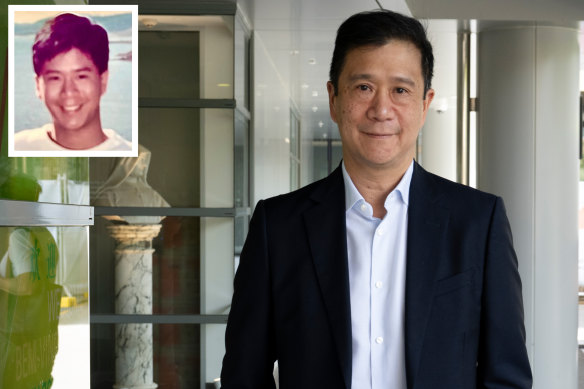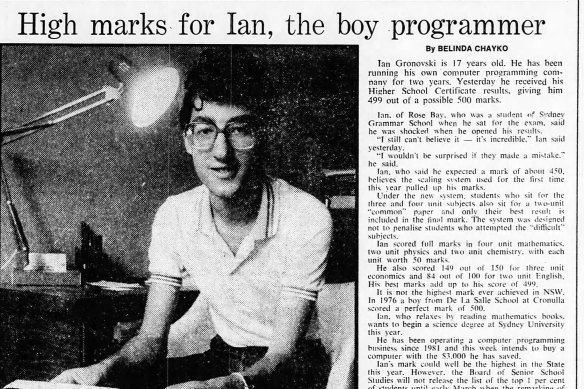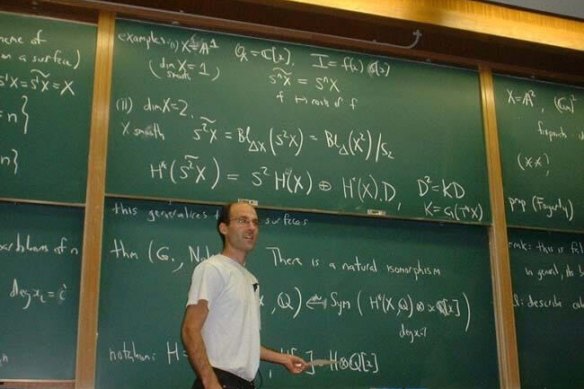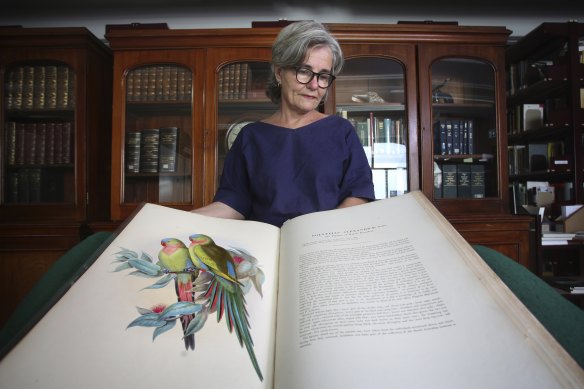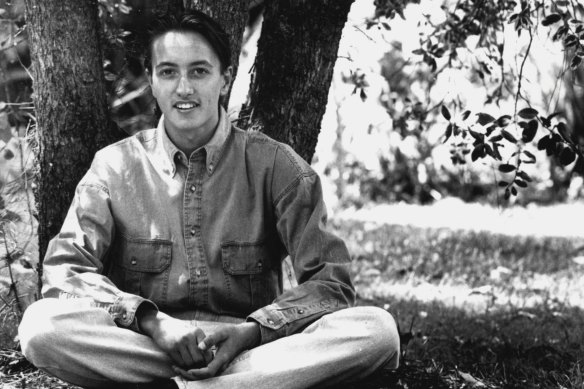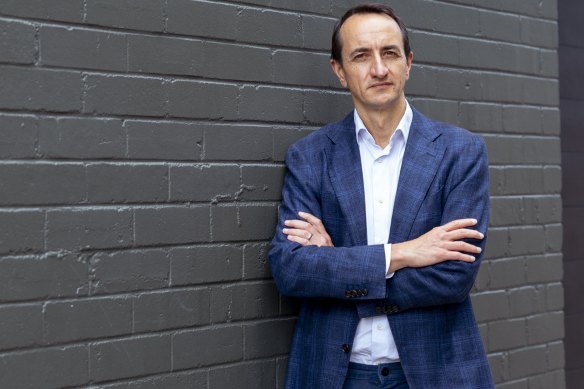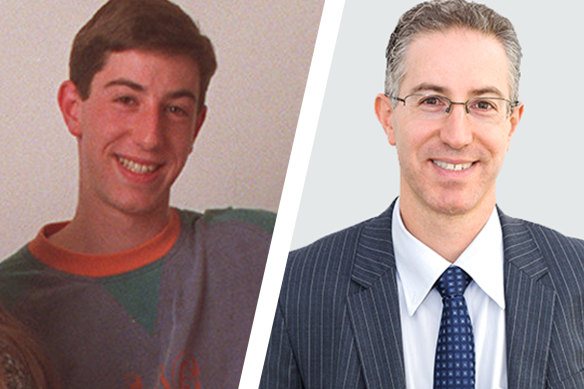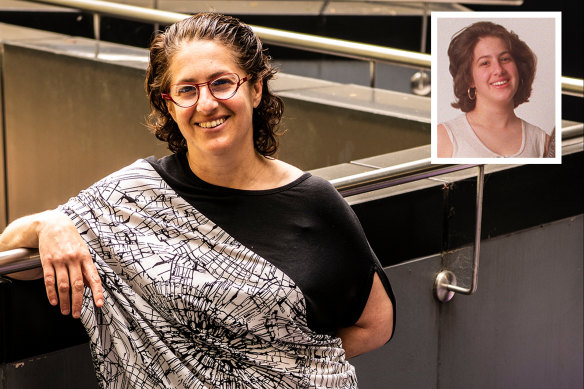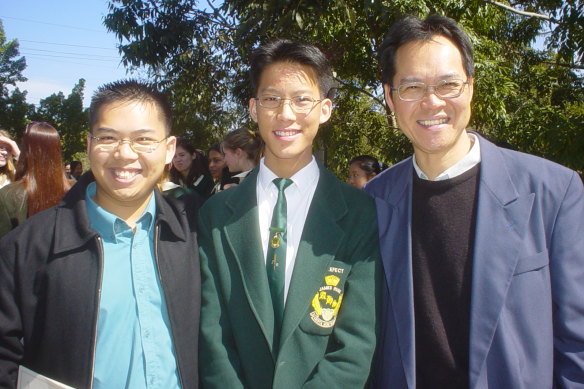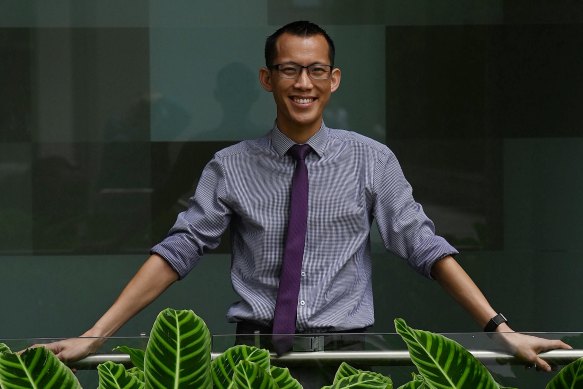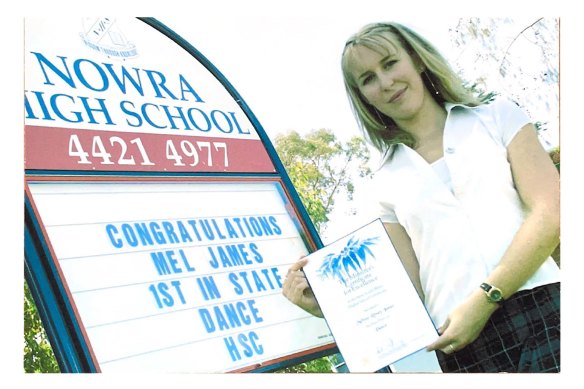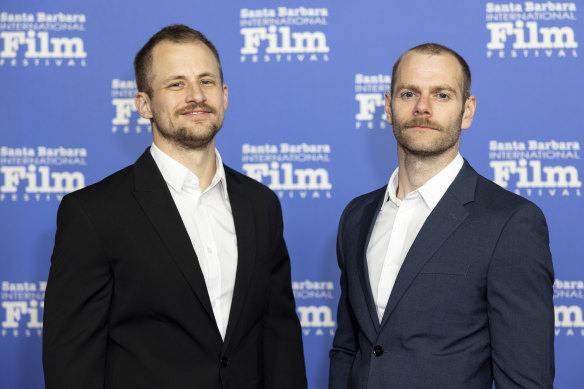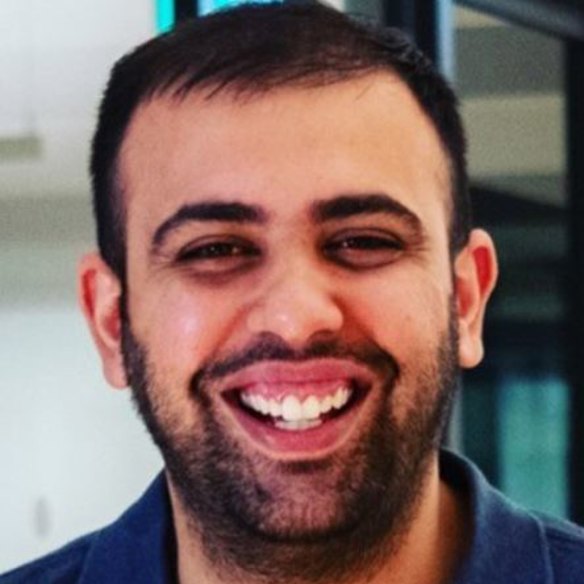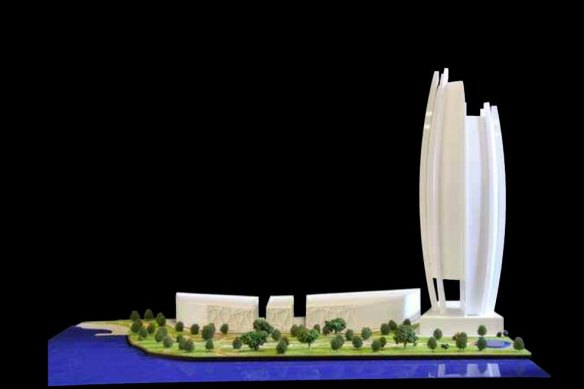By Jostina Basta and Lucy Carroll
Now and then: Roger Chen, Lyria Bennett, Eddie Woo, Melissa James and Dave Sharma.
Save articles for later
Add articles to your saved list and come back to them any time.
The most stressful period for Roger Chen during the Higher School Certificate wasn’t when he sat his exams, but when his friends already had their results and he was still waiting on the postman.
“Results came in the post back then and mine didn’t arrive on time,” he recalls. “Usually, the postman was there by 11am, but for some reason on that day the mail didn’t show up until late afternoon.”
Chen was one of 18 Sydney Grammar students to finish in the top one per cent of the state when he completed the HSC in 1983, and Grammar was the state’s top school.
Dr Roger Chen today, and back in 1983, inset.Credit: Janie Barrett
He now works as an endocrinologist at St Vincent’s Hospital and is a conjoint professor of medicine at the University of NSW.
But it might not have been that way.
“I was torn between two careers – becoming a musician or becoming a doctor,” he says. Chen now enjoys squeezing a classical concert between his work as a specialist in diabetes treatment.
His advice to the class of 2023 as they choose their careers is: “Just make sure you’re happy”.
Almost 63,000 students will get their HSC results via text message on Thursday – nearly twice as many as when Chen waited for the postman 40 years ago.
The Herald tracked down high-achieving students from 10, 20, 30 and 40 years ago to see where they are now and what advice they have for students about to embark on their journey after high school.
The class of 1983
Ian Grojnowski remembers a feeling of disbelief when he opened a letter with his results revealing he scored 499 out of a possible 500 marks in his final exams.
Ian Grojnowski was featured in the Herald’s coverage of the 1983 HSC results.Credit: SMH
The Sydney Grammar student notched up perfect scores in three of his subjects: four-unit mathematics, chemistry and physics, with his results in English and economics not far behind.
“It’s incredible… I wouldn’t be surprised if they made a mistake,” he told the Herald at the time.
Grojnowski went on to study at the University of Sydney and then at the Massachusetts Institute of Technology before becoming a professor in pure mathematics at Cambridge University, where he still lectures in algebra and representation theory.
“It is such a different world now, both in education and in terms of jobs and possible futures, compared with when I finished school,” he says. “Now some of the brightest school-leavers take undergraduate degrees elsewhere, like Harvard and Oxbridge, instead of going to universities in Australia. I think that is a major change, and the policy implications of that are really interesting.”
Ian Grojnowski turned his passion for mathematics into a career. He is now a professor at Cambridge University in the UK.
In 2004, he became the first recipient of the London Mathematical Society’s
Frohlich Prize for his breakthrough work in algebraic geometry and representation theory, which involves the study of abstract algebraic structures and symmetry in all dimensions.
“It’s a real privilege to have a job where I can spend my time thinking deeply about the structure of symmetry, geometry, and of space, and to try and better understand maths.”
Grojnowski believes it is “a transitional and strange time to be a young person now”, with massive advances in artificial intelligence.
“Students doing PhDs now are contemplating what options will be available to them if the fundamental leaps in AI continue at the same pace they have been going,” he says.
Vanessa Finney, who was also in the top one per cent of students, recalls the pressure to choose from a narrow set of careers after her HSC.
Dr Vanessa Finney is head of the Australian Museum’s world cultures, archives and library collections.Credit: James Alcock
“If you got a good mark, then you needed to go for something elite, even if it wasn’t actually your passion,” she says.
While the Ravenswood graduate began a medicine degree at the University of Sydney, she had decided within a year to transfer to an arts course.
Finney is the Australian Museum’s head of world cultures, archives and library collections, where she leads a team that curates exhibitions and makes presentations about the museum’s history. She has a doctorate in the history of science in the 19th century and is the author of two books.
The class of 1993
Dave Shama, pictured when he received his perfect Tertiary Entrance Rank for the 1993 HSC.Credit: Michele Mossop
In the days leading up to receiving his final exam results, Dave Sharma says he wasn’t “thinking about the HSC at all”. It was the summer of 1994 and bushfires were raging in the north and south of Sydney, including near his family home in south Turramurra.
“I remember the fires went west through Lindfield and came close to the edge of the suburb where we lived,” he says.
Sharma drove to collect his results from the local post office with four school friends. He was one of 14 NSW students to receive a perfect Tertiary Entrance Rank (TER) of 100, scoring top marks in English, maths, physics, chemistry and economics.
The Turramurra High student applied to study natural sciences at the University of Cambridge and medicine at both Sydney University and UNSW. He was accepted into science at Cambridge, but after a year switched to study law, which he says was a more natural fit. Since then, he has been Australia’s ambassador to Israel, a diplomat and the member for Wentworth. In November, he secured a preselection victory to enter the Senate.
Dave Sharma, who is a federal senator for NSW.Credit: Dominic Lorrimer
“I wasn’t really politically active when I was in school or university,” says Sharma.
It wasn’t until he met James Crawford, the late judge of the International Court of Justice, while he was studying law, that he became fascinated with how the international system works and the laws that govern it.
Sharma says it would be unusual for teenagers, fresh out of high school, to know what they want to do as soon as they finish their studies.
He urges students who don’t get the marks they hoped for to “be open to new ideas, new approaches and careers”, and not be afraid to ask for advice from people in industries they’re interested in.
Ron Granot achieved the perfect TER in the HSC three decades ago, but was on a holiday with his parents in Israel when his results came out.
Ron Granot was photographed by the Herald a few months after completing his HSC; and today.
It wasn’t until the Sydney Boys High student returned from his trip that he realised the Department of Education had been trying to contact him.
Granot says his final exam marks gave him an initial “leg up” and entry into medicine at UNSW, but it would take 15 years of training before he qualified as a specialist neurologist.
He says that it is important for today’s students to take time to “figure it out”, especially with the options available. “You’re going to be working for the rest of your life, so you have time – especially when you’re 17 or 18,” he says.
Lyria Bennett Moses was also one of the 14 students with a perfect TER. She faced a choice between her interests in maths and debating.
Lyria Bennett Moses, then (inset) and now. Credit: Steven Siewert
She now works as a professor in the faculty of law and justice at UNSW.
The former Ascham student says that while her HSC results gave her an advantage, a student’s final marks are “not going to be a metric on which people judge you your entire life”.
The class of 2003
Eddie Woo, centre, flanked by his brother and father, in his James Ruse days.
James Ruse Agricultural High School had just begun its 27-year run as the state’s top school in the Herald’s annual rankings when Eddie Woo first pulled on its green blazer.
But Woo, now a maths teacher with 1.8 million YouTube subscribers, says Ruse is much more than just an academic institution.
“I was bullied quite badly as a primary school-aged kid, and part of that was to do with racial discrimination, but it was also made worse by the fact that I’m a bookish introvert,” he reveals.
Ruse became a sanctuary, where he was celebrated for his love for knowledge and learning without fear of judgment.
The teacher who made maths cool, Eddie WooCredit: Kate Geraghty
Woo received top bands in maths, maths extension, English and English extension.
But there was one subject that had a lasting impact on his ability to communicate and break down complex ideas: drama.
“I started that in year nine because my mum said, ‘You’re really shy and introverted’. … [The] lessons I learned in drama have put me in a very good stead”.
Woo tells his students at Cherrybrook Technology High School to not just look at their marks as a measure of success but, rather, to the person they’re shaping themselves into through the skills and lessons learned.
That same year, Melissa James from Nowra High finished first in the state in dance, and she hasn’t stopped performing since.
Melissa James was celebrated by her school for her achievement in dance.
“I got my first job on a cruise ship with Royal Caribbean when I was 20 … and that’s when I realised, ‘Wow, people are paying me to dance. That’s crazy. I love it’,” says James.
After eight years of playing roles on cruises in Hairspray and Mamma Mia – then performing in Dubai, China and London – James now works as an aerial acrobat in Las Vegas.
James says she was “always very academic” in school, where she also scored top band marks in mathematics and business studies and achieved an ATAR of 96.65.
James performs in Dubai.
She advises today’s students to think: “What do I love more than anything?”
Karl Eccleston, who attended Pittwater House, was resolute in his decision to pursue literature after topping English extension 2. It was among six subjects in which he scored the top band.
On a study exchange in France, he went to the equivalent of an open mic night for short films with his partner, Brian Fairbairn. It sparked the idea to create their first film, Skwerl, about how English sounds to non-English speakers. It has since had more than 50 million views on YouTube.
Karl Eccleston has gone on to be a celebrated filmmaker. He is pictured right with his partner Brian Fairbairn. Credit: Getty Images
“I think where the greater risk is, that’s where the bigger reward is as well,” he says.
The class of 2013
Dhruv Kohli was in year 10 when he moved from India to Sydney. The former Arthur Phillip High School student topped the business services course, then studied business and commerce at Western Sydney University.
He was eager to get into the start-up sector.
In the early days of the pandemic, he co-founded start-up Geezy, which enabled restaurants to operate their services online, mainly through food delivery apps without a physical storefront.
Dhruv Kohli is now a start-up entrepreneur.
He’s now channelling his efforts on his next start-up called Boba Bhai in India, a bubble tea chain customised to his home country’s palate.
He says his education in India and Australia gave him an advantage that helped him learn how to navigate his current path.
Having earned a spot on the Forbes’ 30 under 30 list in Asia for retail, Kohli advises students to embrace risks and aim high when choosing a career.
Despite external pressure, he reminds students to focus on their own path and that there is not one definition of “success”.
Elyssa Mastroianni, who graduated from Santa Sabina College, topped design and technology in the HSC 10 years ago, as well as achieving top bands in mathematics and religion.
Elyssa Mastroianni is now an engineer.
In her major design project, she says her proposal on Barangaroo ended up “looking not that different to the main casino building that they built there now”.
While her love for design initially led her to study architecture at the University of Sydney, she switched to engineering a year into her degree despite admitting she “didn’t even really know what engineering was” when leaving school.
Elyssa Mastroianni’s major project model of Barangaroo.
She wants more students to look into STEM, and be open to change.
“Australia has a massive shortage of engineers and science professionals … you get to be part of shaping the future”.
Start the day with a summary of the day’s most important and interesting stories, analysis and insights. Sign up for our Morning Edition newsletter.
Most Viewed in National
Source: Read Full Article

